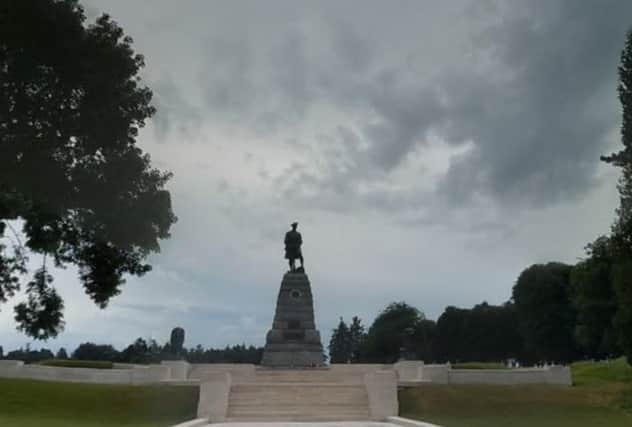Pipes and drums to honour 51st Highland Division


The Paris-based 51st Highland Division Memorial band will tour towns liberated by the Scots troops in the Second World War in late August and lay plaques in each of them.
Julien Sabouret, who founded the pipes and drums band in 2008, said the Paddle Memory Tour ending in Liseaux was aimed at making sure the historic role played by the division was properly remembered.
Advertisement
Hide AdAdvertisement
Hide AdHe told The Scotsman: “Many of the towns have no memorial at all to these heroes and we want to put that right.”
He said that the pipe band which was set up because of his and his friends “enthusiasm for Scottish military history and the role played by its regiments”.
Every year the group, which has its own rifles section along with pipes and drums, comes to the Normandy village of Greville where the Black Watch made a valiant stand with the remnants of the 6th Airborne Division.
They have also toured Scotland visiting military sites, such as the Gordon Highlanders Museum in Aberdeen and Fort George near Inverness and the Black Watch museum in Perth.
“We try to coincide it with France playing Scotland in the rugby,” Mr Sabouret said.
Mr Sabouret wears a Gordon Highlanders kilt but said: “We originally chose the 51st because it was not linked to a single kilt so we could choose the one we liked.”
He added: “Fortunately my father [David, who he recruited for the rifles section] chose the same kilt as me.”
Mr Sabouret snr said: “We find the history of the famous Scottish regiments very interesting. It is also good to meet the veterans who fought to liberate France.”
Advertisement
Hide AdAdvertisement
Hide AdThe 51st had been part of the catastrophic failed attempt to defend France in 1940, with many of its members pulled off the beaches at Dunkirk.
But having won back its honour in Sicily in the Italian campaign the division arrived back in France with a vengeance on 7 June, the day after D-Day.
It was sent to Bréville to help the beleaguered 6th Airborne and fought a terrible battle with the Germans.
This was followed by fighting at Colombelles on 11 July after which General Montgomery suggested its performance was “disappointing” claiming in a telegram to General Brooke that “it had failed in every mission it was given”.
This led to Major General Tom Rennie being brought in as its new commander and it became part of the Canadian First Army, playing a vital role advancing to the town of Liseaux in Operation Totalize.
Then symbolically it headed east of the Seine and to Saint-Valery-en-Caux the scene of its surrender in 1940, to take revenge.
The victory saw the massed ranks of its pipes and drums march through the town in celebration.
It then liberated Dieppe and Le Havre before pushing north through Belgium and into Holland.